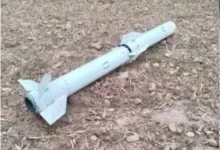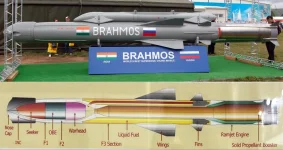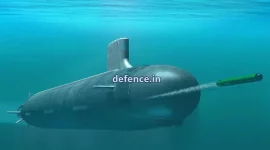- Views: 4K
- Replies: 23
India's DRDO is making significant headway in the development of its indigenous Astra Mk3 air-to-air missile, with recent data indicating a substantial performance advantage over its European counterpart, the Meteor.
Analysis reveals the Astra Mk3 possesses a 20% higher ramjet specific impulse and an 18% longer burn time than the Meteor, positioning it as a leading contender in the next generation of beyond-visual-range (BVR) aerial combat.
The Astra Mk3's enhanced performance is primarily attributed to its advanced ramjet propulsion system. Ramjet engines, which are most efficient at supersonic speeds, utilize the missile's forward motion to compress incoming air for combustion, eliminating the need for an onboard oxidizer like traditional rocket motors.
Specific impulse, a key measure of a ramjet's efficiency, indicates how much thrust is generated per unit of fuel consumed over time. The Astra Mk3's 20% higher specific impulse compared to the Meteor suggests it can achieve and maintain significantly higher speeds.
Furthermore, the Astra Mk3 exhibits an 18% longer burn time. This extended burn duration allows the missile to sustain thrust for a more extended period, translating to a greater range and an expanded "no-escape zone," the area within which a target aircraft has little to no chance of evading the missile.
The provided data estimates the Astra Mk3's maximum range to be 270+ km when launched from a fighter, surpassing the Meteor's estimated range of approximately 250 km. Open-source data states that the Meteor's range is over 100km but this could be a conservative estimate.
The Meteor, developed by a consortium of European companies led by MBDA, is currently considered one of the world's most advanced BVR missiles. It is integrated into several prominent fighter aircraft, including the Eurofighter Typhoon, Dassault Rafale, and Saab Gripen. While the Meteor has been operational since 2016, the Astra MK3 represents a significant step forward for India's indigenous missile development program.
The Astra MK3 is not simply an incremental upgrade but rather a significant leap forward in air-to-air missile technology. Its superior speed, extended range, and larger no-escape zone have the potential to significantly alter the balance of power in aerial engagements.
Astra Mk3 is based on the under-development SFDR (Solid Fuel Ducted Ramjet) missile being developed jointly by India and Russia. The SFDR is also a ramjet-powered missile that has demonstrated range of over 300 km in tests. The technology developed for SFDR can enhance the capabilities of Astra Mk3.
The DRDO is anticipated to conduct further testing and refinement of the Astra Mk3. While a precise timeline for its operational deployment remains undisclosed, the advanced capabilities showcased by the missile clearly establish it as a critical asset in India's future air defence arsenal.




